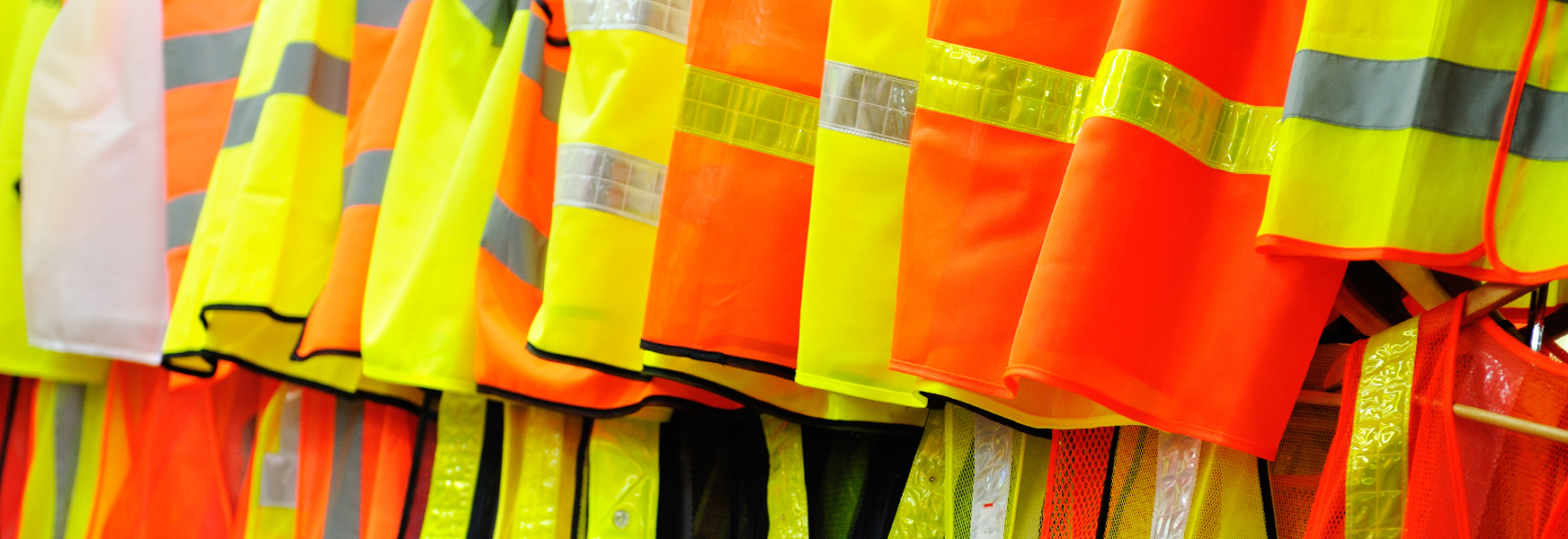Fashion Week has Everyone Asking, What is the Latest in the World of Safety Wear?

September brings with it fall fashion at all the major locations: New York, Paris, Milan, London. If fashion is your passion, this is the time for you. But this is a safety blog and our passion is protecting workers in all industries. What’s in fashion in the world of safety you might ask?
Well, as my esteemed colleague said recently (and the inspiration for this post), “Fluorescent orange is the new black!” High visibility clothing is certainly the proper wear for any season, especially for those working around traffic, congested worksites, or during hours of darkness. OSHA mandates the use of high visibility garments in these situations, but they are often a good idea anytime employees are on foot and need to be seen. The various garment classes are explained in the document High Visibility Clothing for Heavy & Highway Construction.
Naturally, there’s nothing more fashionable than a hard hat. Another mandated piece of PPE for anyone exposed to hazards above such as falling objects, suspended loads, or low overhead clearances. Make sure employees are using the proper hard hat for the exposure faced. Classes include G (general), E (electrical), and C (conductive). Check out this article from OHS Online for frequently asked questions regarding hard hats and head protection standards.
Eye protection is also critical. Nothing more fashionable than an attractive set of baby blues, so do all you can to protect them. Safety glasses used to be about as attractive as those goggles you wore in high school chemistry class. Although those goggles are sometimes still required, most safety glasses designed to protect against flying objects are pretty fashionable. Wrap around style, tinted lenses, and anti-fog coatings are some of the offerings. For those that need some focal assistance, safety glasses with “cheaters” in the lenses are readily available as well. For the holy grail of safety glasses, one can splurge on self-darkening prescription lenses that provide clear vision and sun protection in all lighting conditions. These are well worth the investment; I use mine all the time! Just make sure all safety lenses are Z87 approved (the latest ANSI standard is ANSI Z87.1-2015).
Moving down to foot protection, what is better looking than a good pair of safety shoes? Foot protection is required anytime there is a crushing hazard present. Warehouse operations, construction, compressed gas operations, freight operations, and heavy manufacturing are examples where foot protection is required. Metatarsal protection might also be required in some industries. But these shoes don’t have to be gaudy or cumbersome. Safety shoes are available in all styles and colors - from eight inch high boots to polished oxfords. Steel toes, composite toes, and cut resistant loggers’ boots are all available for your next walk down the runway. For more information, OSH Online has another informative article titled, “A Guide to Safety Footwear Regulations.”
Lastly, hand protection is often required. If there’s any doubt as to how important and complex our hands are, check out Al Brown’s previous post - “Our Hands are Incredible Tools.” You need to protect those hands, so consider wearing gloves to guard against abrasions or cuts, and to help increase grip strength. Remember, not all gloves do all things. Many actually reduce gripping ability or dexterity, and they should not be worn when using a power tool that might draw in the gloved hand, such as a table saw or drill press. But gloves come in all sizes, materials, and serve many useful, and in many cases, fashionable, functions.
Remember, employers are required to purchase PPE for employees with only a few exceptions. The prescription safety glasses and standard boots are the two major exceptions. A job hazard analysis should be conducted to determine the PPE needs. If the job presents hazards that require PPE, the employer is most often responsible to provide it and replace it when necessary. A comprehensive program would also include PPE inspection, evaluation, replacement, and proper fit analysis. Simply giving an employee PPE doesn’t meet the standard.
So fashion comes in many forms. We all might not be up to the standards in Paris or London, but protecting your employees with the right personal protective gear is the right move - fashionable or not!
By Randy Klatt

